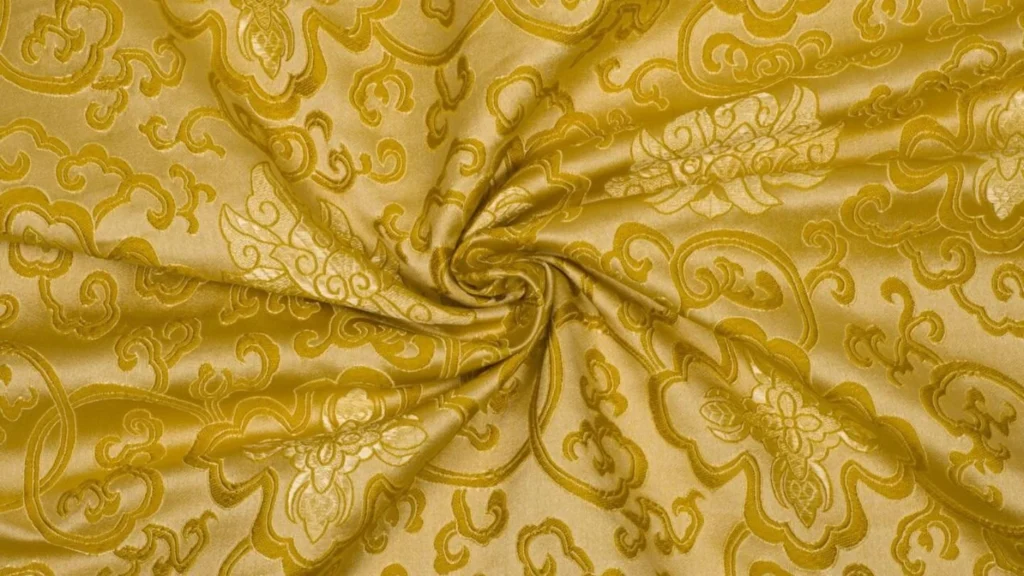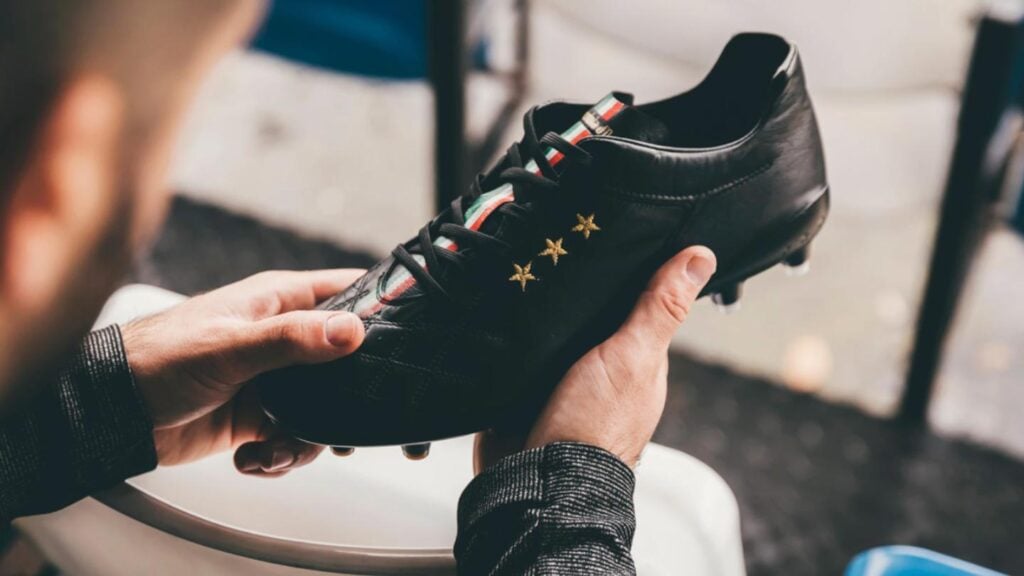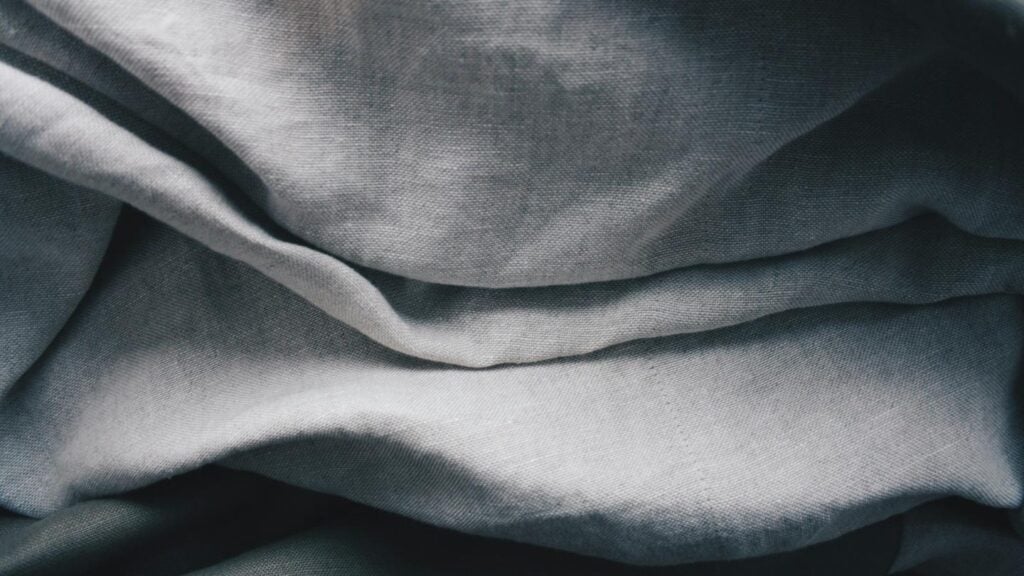2 – Benefits of Choosing Gore-Tex Fabric
3 – Gore-Tex Fabric vs Other Fabrics
4 – How Gore-Tex Fabric Is Manufactured
5 – Common Uses in Fashion
6 – Understanding the Environmental Impact of Gore-Tex Fabric
7 – Exploring Price Points and Value for Money
8 – Conclusion
9 – FAQs
What is Gore-Tex Fabric?
Gore-Tex fabric is a high-performance material known for its remarkable ability to resist water while remaining breathable. It was originally developed in the late 1960s by Bob Gore and has since become a household name in the outdoor and activewear industries. The fabric is constructed using a unique membrane made of expanded polytetrafluoroethylene (ePTFE), which offers several key advantages over traditional fabrics.
- Waterproof: Gore-Tex fabric is known for its waterproof properties, thanks to its tightly woven membrane that prevents water from penetrating.
- Breathable: Unlike many waterproof fabrics, Gore-Tex allows sweat and moisture vapor to escape, which helps regulate body temperature and comfort during physical activity.
- Durability: This fabric is highly resistant to wear and tear, making it ideal for extreme outdoor conditions.
- Windproof: Gore-Tex also provides excellent protection against wind, adding an extra layer of comfort and protection in cold environments.
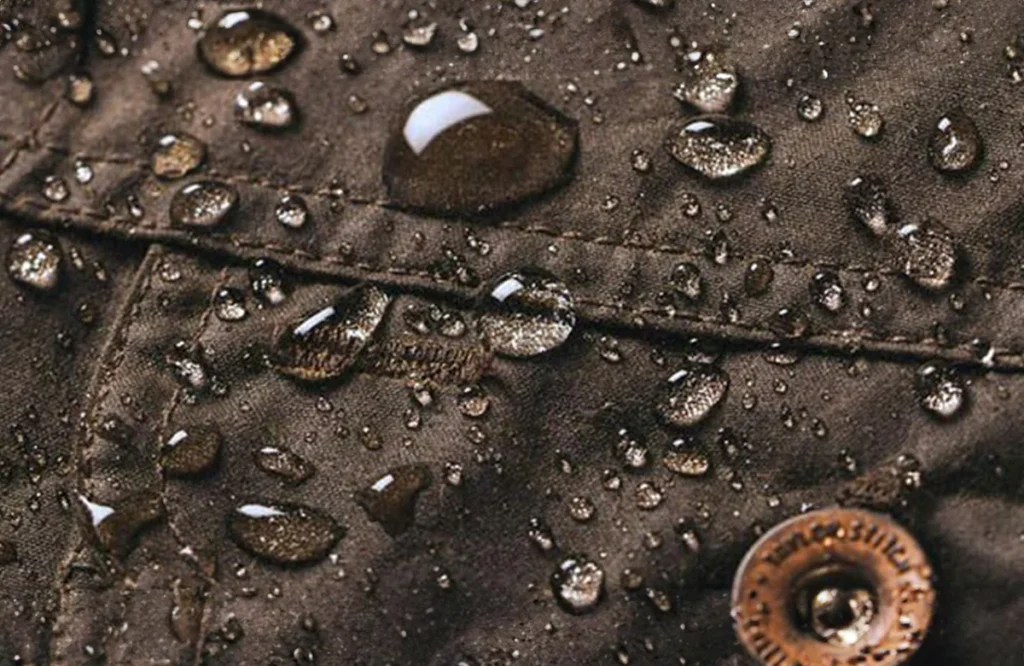
Benefits of Choosing Gore-Tex Fabric
Gore-Tex fabric offers a range of benefits that make it highly sought after in various industries, particularly outdoor apparel and gear. Here are the key advantages:
- Waterproof Protection: One of the most significant benefits of Gore-Tex is its ability to keep water out. The microporous membrane prevents water from penetrating, keeping you dry even in the harshest weather conditions, whether it’s rain, snow, or heavy downpours.
- Breathability: Unlike many other waterproof fabrics, Gore-Tex allows sweat and moisture vapor to escape. This means you can stay dry and comfortable during high-intensity activities like hiking, running, or skiing. The breathable nature prevents you from feeling clammy or overheated.
- Windproof: Gore-Tex also acts as a wind barrier, making it an excellent choice for cold, windy environments. It helps retain warmth by blocking the chilling effects of the wind, keeping you comfortable even in icy conditions.
- Durability and Longevity: The fabric is known for its toughness and resistance to wear and tear. Whether you’re using it for hiking boots, jackets, or gloves, Gore-Tex is built to last. It can endure exposure to harsh conditions without compromising its performance.
- Versatility in Design: Gore-Tex fabric can be used in a variety of applications, from outerwear to footwear and even accessories. It’s available in different weights and finishes, allowing manufacturers to create products for diverse weather conditions and purposes.
- Lightweight: Despite its robust protective qualities, Gore-Tex remains lightweight, making it suitable for layering without adding bulk. This makes it a popular choice for outdoor enthusiasts who need to pack light without sacrificing performance.
- Easy Maintenance: Gore-Tex is relatively low-maintenance compared to other waterproof fabrics. It retains its waterproof properties for longer periods with proper care, and cleaning it usually involves just a simple wash.
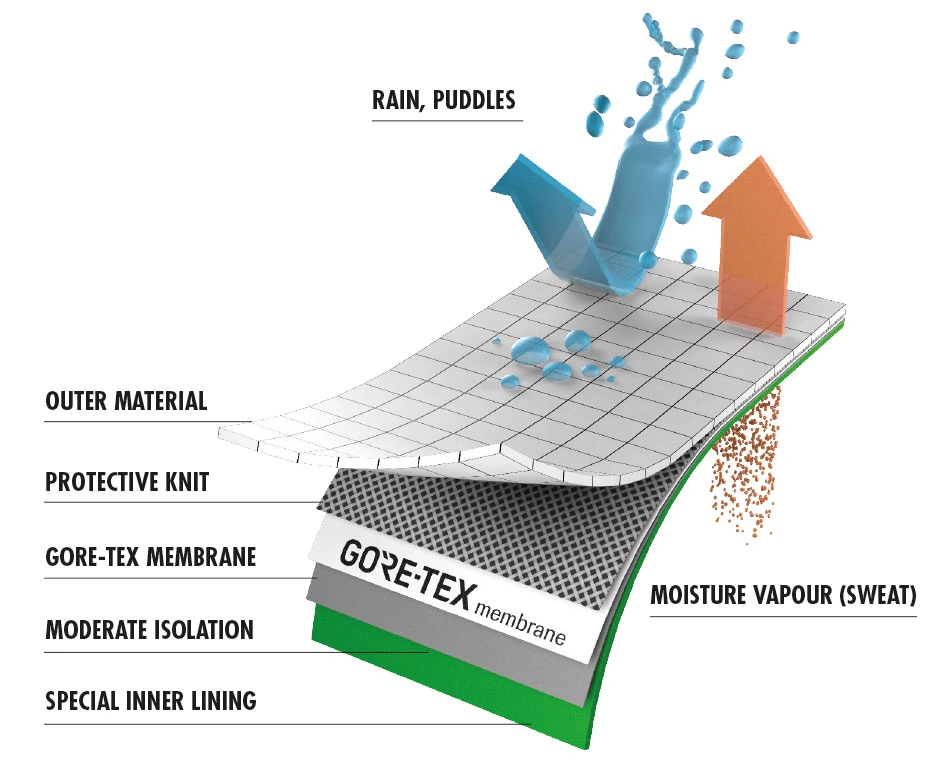
Gore-Tex Fabric vs Other Fabrics
Here’s a brief comparison of Gore-Tex with other popular fabrics used for outdoor gear and activewear:
1. Gore-Tex vs Nylon
- Waterproofing: Gore-Tex is fully waterproof, while nylon is water-resistant but can absorb water over time.
- Breathability: Gore-Tex allows moisture to escape, keeping you dry inside; nylon tends to trap sweat, making it less breathable.
- Durability: Both are durable, but Gore-Tex is more resistant to wear and tear in extreme conditions.
- Comfort: Gore-Tex is lightweight and flexible; nylon can feel heavier and less flexible in certain uses.
2. Gore-Tex vs PVC (Polyvinyl Chloride)
- Waterproofing: Both are waterproof, but Gore-Tex offers superior breathability.
- Breathability: Gore-Tex allows sweat to escape, while PVC traps moisture inside, leading to discomfort.
- Durability: PVC is highly durable, but Gore-Tex lasts longer and is better suited for movement and flexibility.
- Comfort: PVC is stiff and bulky, while Gore-Tex is more flexible and comfortable to wear.
3. Gore-Tex vs Cotton
- Waterproofing: Gore-Tex is waterproof; cotton absorbs water and becomes heavy when wet.
- Breathability: Gore-Tex is breathable, while cotton is more breathable but offers no protection from rain.
- Durability: Gore-Tex is far more durable in wet and harsh conditions compared to cotton.
- Comfort: Cotton is soft and comfortable but lacks the protection Gore-Tex offers in wet environments.
4. Gore-Tex vs Polyester
- Waterproofing: Gore-Tex is fully waterproof; polyester is water-resistant but not waterproof.
- Breathability: Gore-Tex offers excellent breathability, while polyester can trap moisture.
- Durability: Both are durable, but Gore-Tex performs better in extreme conditions.
- Comfort: Gore-Tex is more comfortable for high-activity wear due to its breathability, while polyester may cause overheating during intense physical activity.
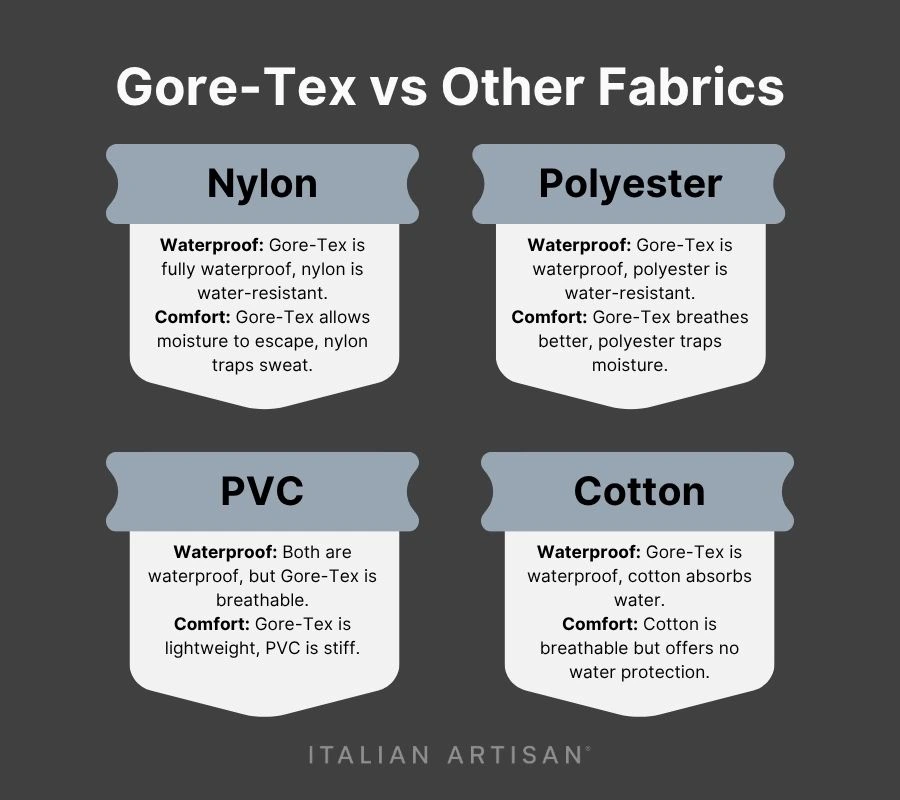
How Gore-Tex Fabric Is Manufactured
The manufacturing process of Gore-Tex involves advanced technology to create a waterproof yet breathable fabric. Here’s a simplified breakdown:
1. Creating the Gore-Tex Membrane
- The core of Gore-Tex is made from ePTFE (expanded polytetrafluoroethylene), a polymer that is expanded to form microscopic pores. These pores block water but allow water vapor (sweat) to escape, ensuring breathability.
2. Laminating the Membrane
- The ePTFE membrane is bonded to an outer layer of durable fabric (such as nylon or polyester) and an inner moisture-wicking lining. This lamination creates a sandwich of materials that protects against water while maintaining comfort.
3. Sealing the Seams
- Special seam-sealing tape is applied to stitched areas to ensure water doesn’t penetrate through seams, preserving the waterproof nature of the fabric.
4. Testing for Performance
- Gore-Tex undergoes rigorous waterproof and breathability tests to ensure it meets high performance standards, with water pressure tests and moisture vapor tests.
5. Finishing and Coating
- Additional treatments, such as water-repellent finishes or coatings, are applied to enhance durability and resistance to dirt and stains.
6. Fabric Conversion for End Use
- The fabric is then cut, shaped, and assembled into garments or gear, with added features like zippers and pockets.
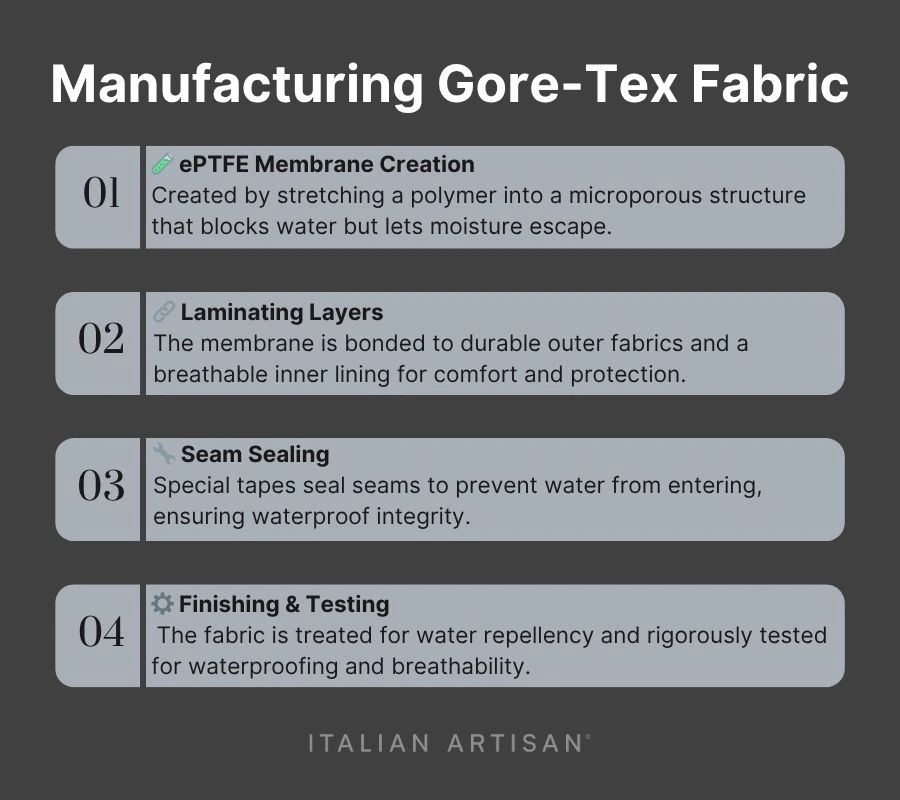
Produce your fashion collection with us
Common Uses in Fashion
Gore-Tex fabric is widely used in fashion, particularly for outdoor and performance wear. Its unique combination of waterproofing, breathability, and durability makes it an ideal material for a variety of applications. Here are some of the most common uses:
1. Outerwear (Jackets and Coats)
- Weather Protection: Gore-Tex is commonly used in high-performance jackets and coats, providing protection against rain, snow, and wind while allowing moisture to escape, ensuring comfort during physical activities.
- Fashion and Function: Many outdoor and luxury fashion brands incorporate Gore-Tex in stylish outerwear, blending performance with modern design.
2. Footwear
- Waterproof Shoes and Boots: Gore-Tex is often used in hiking boots, running shoes, and winter footwear, keeping feet dry and comfortable by preventing water entry and allowing sweat to escape.
- Active and Casual Wear: Gore-Tex is also found in everyday shoes, offering waterproof and breathable qualities for those living in wet climates.
3. Activewear and Sportswear
- Performance Gear: Gore-Tex is frequently used in sports jackets, pants, and accessories, especially for skiing, snowboarding, and hiking. It’s ideal for those who need weather-resistant gear without sacrificing breathability.
- Versatility: Athleisure brands also use Gore-Tex in functional, stylish pieces that perform well in various weather conditions.
4. Bags and Accessories
- Water-Resistant Bags: Gore-Tex is often incorporated into backpacks, travel bags, and handbags, providing durability and water resistance for everyday use or outdoor activities.
- Technical Accessories: Gore-Tex is used in gloves, hats, and scarves, offering protection from the elements while maintaining comfort.
5. Luxury Fashion
- High-End Outerwear: Many luxury brands have embraced Gore-Tex for its performance qualities, incorporating it into premium jackets and coats for customers who value both style and practicality.
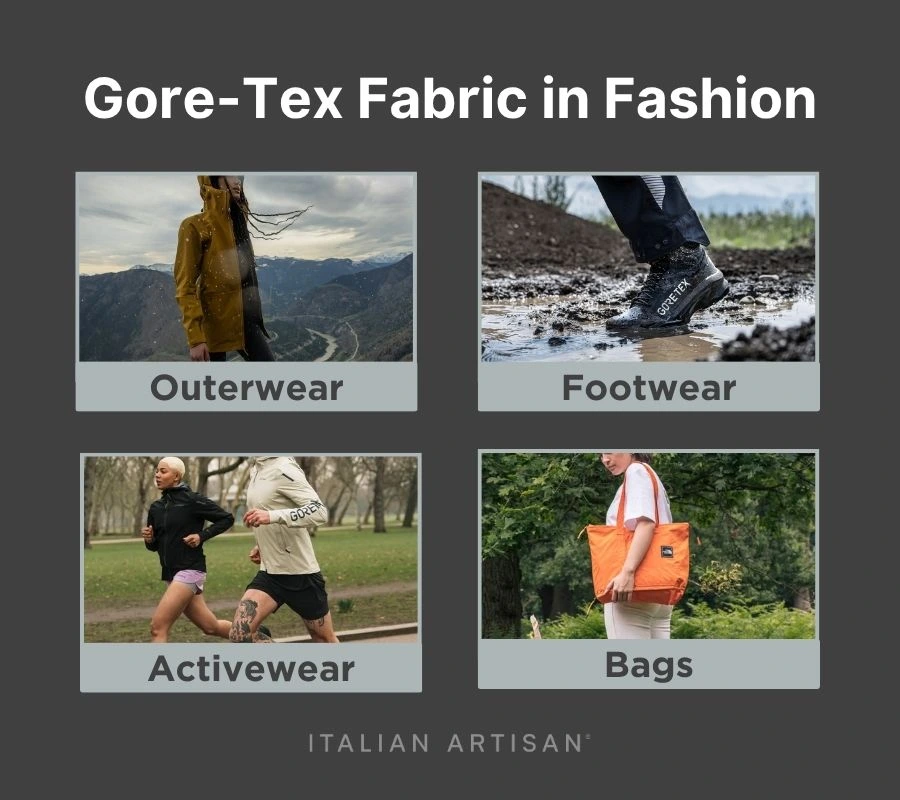
Understanding the Environmental Impact of Gore-Tex Fabric
While Gore-Tex fabric offers exceptional performance, it’s important to understand its environmental impact:
1. Production Process
- Energy Use: The production of ePTFE, the core material, requires significant energy, making the manufacturing process energy-intensive.
2. Materials
- Non-Biodegradable: Gore-Tex is made from synthetic, non-biodegradable materials like ePTFE, nylon, and polyester, contributing to long-lasting waste in landfills.
3. Chemical Treatments
- Water-Repellent Coatings: Gore-Tex fabric is treated with chemicals, including PFCs, which can contaminate the environment. However, the company is working to phase out harmful PFCs and replace them with eco-friendly alternatives.
4. Durability and Longevity
- Long Lifespan: Gore-Tex products are durable, often lasting many years, which reduces the need for replacements and helps lower overall waste.
5. Recycling Challenges
- Difficult to Recycle: The complex structure of Gore-Tex makes it hard to recycle, limiting options for end-of-life disposal.
6. Sustainability Efforts
- Eco-Friendly Initiatives: Gore-Tex is focusing on using more sustainable materials and reducing its carbon footprint, while some brands are exploring recycling programs for old products.
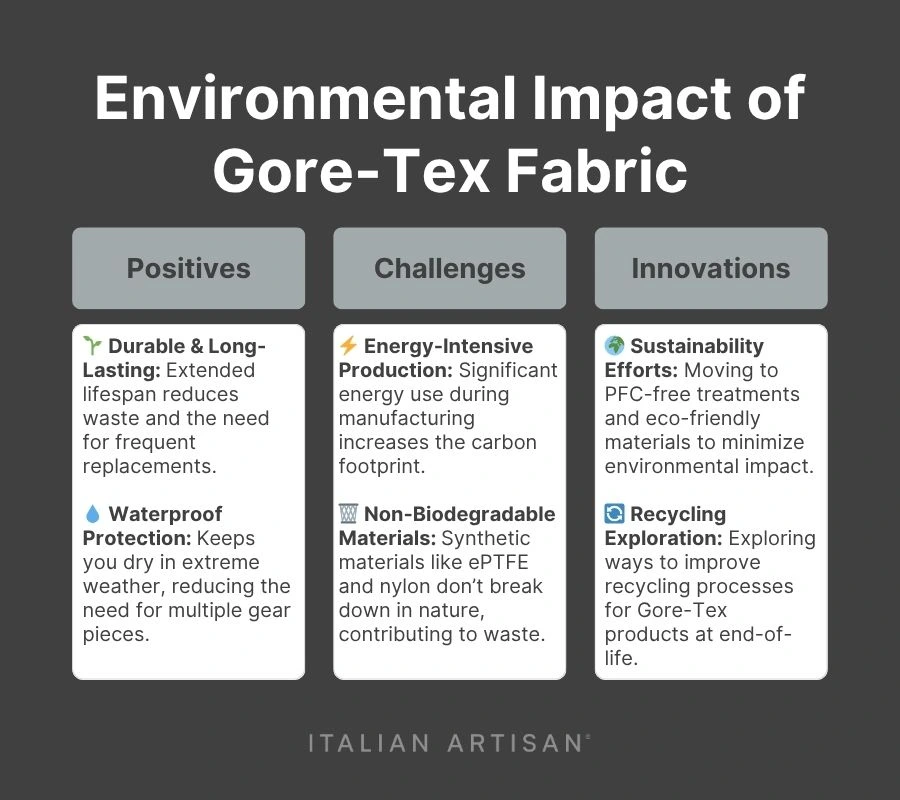
Exploring Price Points and Value for Money
Gore-Tex is a premium fabric known for its high performance, but it comes at a higher cost:
1. Price Range
- Higher Cost: Gore-Tex products are more expensive, typically ranging from $100 to $500+, depending on the item.
2. Cost vs. Performance
- Long-Term Investment: Despite the higher upfront cost, Gore-Tex’s durability and performance provide better value over time by reducing the need for frequent replacements.
3. Alternatives
- Lower-Cost Options: Cheaper waterproof fabrics like PU or polyester offer some protection but lack the breathability and durability of Gore-Tex.
4. Longevity and Maintenance
- Durability: Gore-Tex products last longer and maintain performance with minimal upkeep, offering long-term value.
Conclusion
Gore-Tex fabric is a top choice for those seeking high-performance, waterproof, and breathable materials. While it comes at a higher price, its durability, comfort, and long-lasting protection against the elements make it a valuable investment, particularly for outdoor gear and activewear. With its ability to withstand harsh conditions and provide consistent performance over time, Gore-Tex offers significant value for money, making it a preferred option for those who prioritize quality and reliability in their clothing and gear.
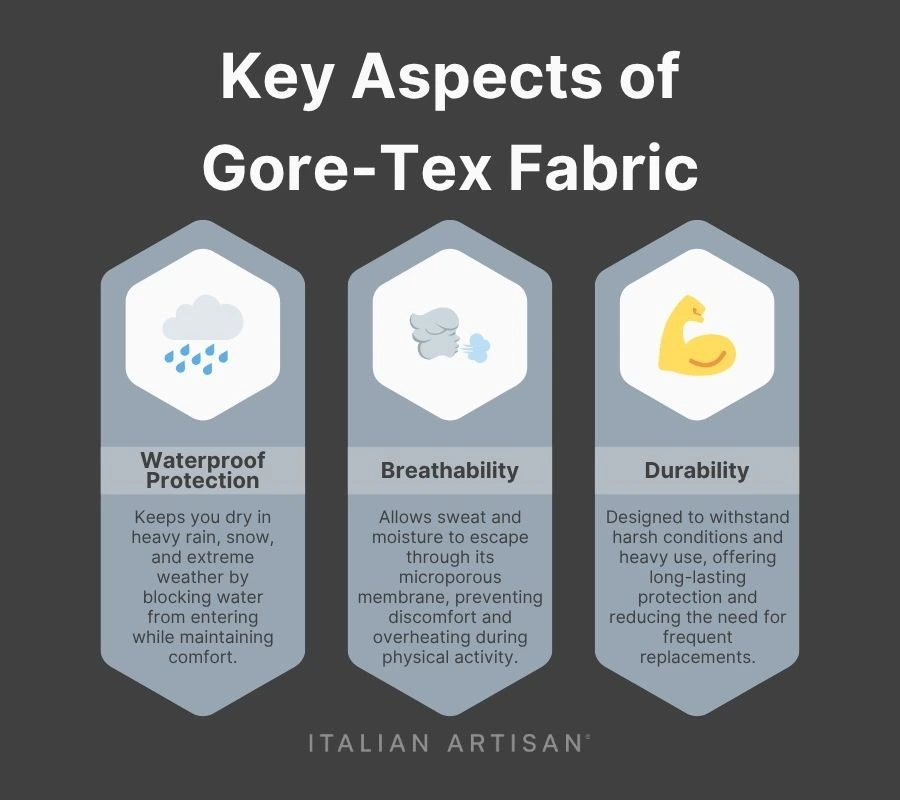
FAQs
- What is Gore-Tex fabric?
- Gore-Tex is a high-performance fabric known for its waterproof, breathable, and durable properties, making it ideal for outdoor clothing and gear.
- How does Gore-Tex keep you dry?
- Gore-Tex uses a microporous membrane that blocks water molecules while allowing moisture vapor (such as sweat) to escape, keeping you dry and comfortable.
- Is Gore-Tex breathable?
- Yes, Gore-Tex is breathable, allowing sweat and moisture vapor to escape while keeping rain and snow out, making it ideal for high-intensity activities.
- How durable is Gore-Tex fabric?
- Gore-Tex is highly durable and resistant to wear and tear. It is designed to withstand harsh weather conditions and rough environments for extended periods.
- Can Gore-Tex be used in all types of weather?
- Yes, Gore-Tex performs well in various weather conditions, including rain, snow, wind, and cold temperatures, making it suitable for all seasons.
- How do I care for Gore-Tex products?
- Gore-Tex products should be washed according to the manufacturer’s instructions, typically in cold water with a mild detergent. Reproofing treatments can help maintain its waterproof properties.
- Is Gore-Tex eco-friendly?
- While Gore-Tex fabric offers excellent performance, its environmental impact is a concern due to its production process and use of synthetic materials. However, the company is working to reduce harmful chemicals and improve sustainability.
- How long does Gore-Tex last?
- With proper care, Gore-Tex can last many years, maintaining its waterproof and breathable qualities over time, making it a long-term investment.
- Is Gore-Tex waterproof?
- Yes, Gore-Tex is designed to be completely waterproof, providing protection against rain, snow, and other elements.
- Can I recycle Gore-Tex fabric?
- Gore-Tex is difficult to recycle due to its layered structure, but the company is exploring options to reduce waste and improve recycling processes.




